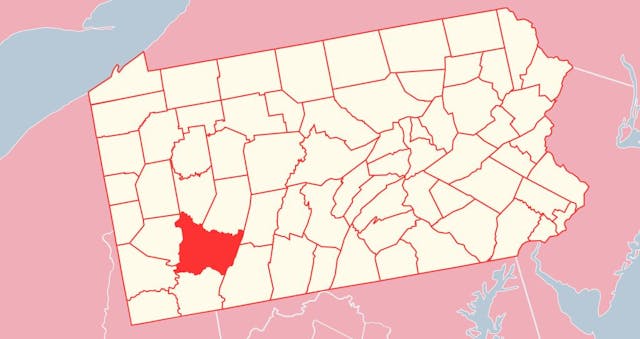Rehabs in Westmoreland
Located in Pennsylvania Westmoreland is a third-class county. In fact, there are about 3 first-class towns and 18 second-class ones. Based on the cost of living, salary, and overall living situation, it is regarded as a decent area to live.
Despite these qualities, the county's population suffers from substance misuse. The most commonly abused substance is still alcohol. According to the most recent Pennsylvania Department of Health statistics, alcohol abuse has reached approximately 40%. And the thing is, this number is steadily increasing.
Another issue is weed misuse, which is almost 17% higher than the state average of 17.55%. Even if the Health Committee hasn't researched the data well yet, there is a significant misuse rate of evaporation among young people.
As a result, local governments have launched county-level projects to assist addicts. The most popular and effective option is to build rehab clinics and help residents obtain appropriate therapy.
So, whenever you or a loved one feels the need for therapy, go to the local recovery center and have a substance abuse evaluation.
Drug and Alcohol Use Evaluation
The first step toward recovery is accepting the situation. Later, you have to undergo a drug and alcohol use evaluation. It will help the therapist to understand the addiction level as well as create an individual treatment plan.
The assessment also requires consulting a psychologist as the drug abuse may harm the mental health of a person as well.
After the assessment results, the therapist will prescribe the addict full therapy. It starts with a detox course. So you must find the nearest and most convenient detox facility in Westmoreland County. This stage involves getting rid of the toxins left in the body by drug use.
Inpatient/Outpatient Care
After successfully completing your detox course you are to find Rehabs in Westmoreland County and enroll in one of them. Based on your therapist’s recommendations, you will need to complete either inpatient or outpatient program.
Inpatient care requires you to stay in a recovery center for 24 hours. Thus you have to be enrolled in all stages of therapy. This does not, however, stop you from engaging in activities other than treatment. The problem is that there is a lot of pain that the therapists must control throughout this time. Mental health issues are also under the therapists’ attention.
Outpatient care requires up to 12 hours in a facility. It mostly focuses on drug misuse education, and individual and group counseling. It also teaches addicts how to cope with this situation.
Specialists generally recommend outpatient care after you’ve completed the inpatient one. If the rate of substance abuse is low, the initial step after detox is admission to outpatient care.
Teens Recovery Programs
In general, all treatment centers provide specialized programs for teenagers. This is the only case when the law accepts forcing someone into rehab.
Parents and legal guardians who notice a problem with their teen's behavior can contact a therapist. If the latter prescribes a treatment he/she must sign the enrollment documents.
Prices
Prices vary widely depending on the program type and the individual's needs. The county provides free rehab services to anyone who cannot pay it. However, there is generally limited space, so you must wait longer. Some recovery hubs accept insurance payments, so you can join if you have state-approved insurance.
If none of these works for you, there are several local financial help options. You must qualify for them and enroll in them.
Prices might range from $3,000 to $45,000 or more depending on the unique demands and type of therapy. Simply choose the best choice for you.
Privacy Policy
Actually, rehab clinics do not have the authority to disclose personal information about their patients to external parties. It is a state statute. Several years ago, the state recognized the federal law laws and rules (codified as 42 CFR Part 2). The latter has restricted the use of personal information.
So, no one is able to know who is currently in the facility except for Health Information Organizations and other information-sharing systems that require personal data.

